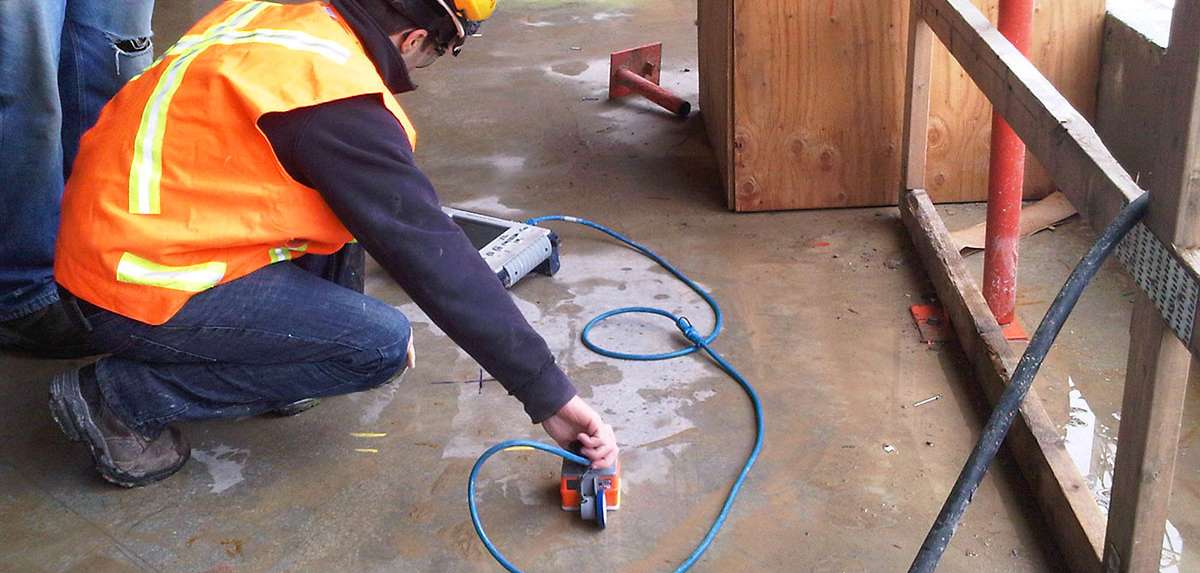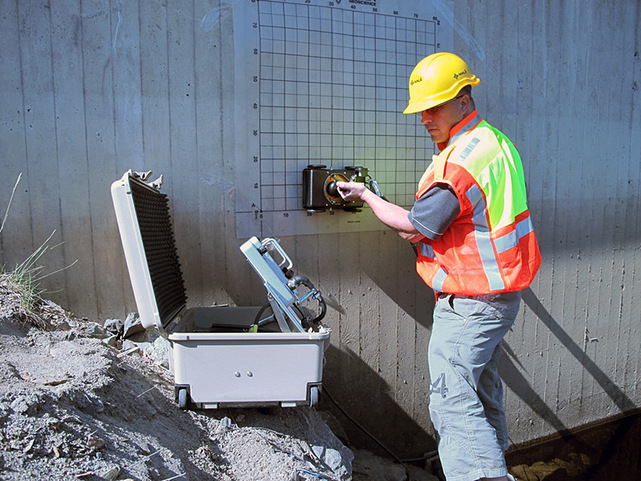Beyond the Surface: Leveraging Advanced Concrete Scanning Techniques for Unmatched Precision and Insight
Advanced concrete scanning methods have actually emerged as crucial tools in this quest, supplying a peek under the surface to reveal a globe of crucial insights. By taking advantage of advanced innovations, specialists can uncover anomalies, evaluate the problem of concrete frameworks, and make educated decisions that form the training course of projects.
Significance of Advanced Concrete Scanning
The relevance of making use of advanced concrete scanning techniques depends on the unparalleled precision they provide for finding sub-surface abnormalities and ensuring structural integrity. By utilizing innovative modern technologies such as ground-penetrating radar (GPR), electro-magnetic induction, and progressed finder imaging, construction experts can dig under the surface of concrete structures with a degree of accuracy that far exceeds conventional examination techniques. Concrete Scanning. These methods enable the recognition of surprise hazards like rebar corrosion, spaces, channels, or post-tension cords that might endanger the security and safety of a framework over time
Additionally, progressed concrete scanning gives indispensable insights right into the total problem of a concrete aspect without the demand for intrusive steps, reducing the risk of triggering damage throughout the evaluation process. The capacity to identify the exact area and depth of potential problems permits targeted repairs and upkeep, ultimately lengthening the life expectancy of the structure and maximizing its performance. Fundamentally, the value of sophisticated concrete scanning can not be overstated in the world of building and construction and facilities upkeep, where accuracy and reliability are paramount.
Kinds Of Cutting-Edge Technologies

Abnormalities and Flaw Detection

In enhancement to GPR, concrete scanning methods like thermography and impact-echo testing are likewise effective in spotting abnormalities and flaws. By leveraging these advanced strategies, experts can proactively resolve architectural issues, making sure the longevity and safety of concrete frameworks.
Assessing Concrete Condition
How can designers properly assess the problem of concrete structures to ensure their durability and safety? Assessing the concrete problem is a vital element of maintaining framework honesty. Various innovative concrete scanning methods are employed for this objective. Ground-penetrating radar (GPR) is generally utilized to analyze the inner framework of concrete, spotting gaps, fractures, and various other anomalies that might jeopardize its toughness. In addition, impact-echo testing can give understandings right into the density and integrity of concrete aspects. Ultrasonic pulse rate testing is one more valuable method for assessing concrete top quality by gauging the rate of sound waves via the product.
Integrating non-destructive screening techniques with visual examinations permits for a comprehensive evaluation of concrete problem, allowing engineers to identify possible problems early on and execute timely upkeep or repair services. By leveraging these sophisticated techniques, designers can make sure the long-term durability and safety and security of concrete structures.
Enhancing Decision-Making Processes
In the world of facilities management, maximizing decision-making processes is vital for ensuring the reliable maintenance and long life of concrete structures. Enhanced decision-making procedures in concrete management entail utilizing innovative scanning methods to collect comprehensive information on the condition of frameworks. By leveraging innovations such as ground-penetrating radar and 3D imaging, stakeholders can make informed decisions check this site out regarding substitute, repair work, or support methods.
These advanced scanning methods give important understandings right into the internal structure of concrete, recognizing potential problems such as spaces, splits, or corrosion that may not show up externally. This degree of thorough information permits aggressive upkeep preparation, minimizing the danger of architectural failings and raising the overall lifespan of concrete structures.
Furthermore, by integrating digital paperwork and analysis tools into the decision-making process, stakeholders can track the evolution of concrete conditions over time, enabling anticipating upkeep approaches and maximizing source allowance. Eventually, the assimilation of sophisticated concrete scanning methods improves decision-making processes by providing unmatched accuracy, insight, and efficiency in infrastructure management.
Verdict
Finally, advanced concrete scanning techniques offer exceptional accuracy and understanding in identifying abnormalities, problems, and assessing the problem of concrete frameworks. By leveraging innovative modern technologies, decision-making processes can be enhanced, leading to even more efficient and enlightened options for maintaining and fixing concrete framework. These techniques play a vital function in making sure the security and long life of concrete structures, making them a crucial device in the field of building and construction and design.
Furthermore, progressed concrete scanning offers indispensable insights right into the general problem of a concrete aspect without the demand for invasive actions, reducing the threat of causing damages during the evaluation procedure - Concrete Scanning. Another ingenious modern technology is 3D X-ray scanning, which offers thorough images of the interior framework of concrete, providing beneficial information without the requirement for destructive testing. Furthermore, Concrete Cover Meters her comment is here are made use of to measure the density of concrete cover over support bars accurately. Improved decision-making procedures in concrete monitoring involve using innovative scanning techniques to gather in-depth information on the condition of structures.In verdict, advanced concrete scanning strategies offer unrivaled accuracy and insight in finding abnormalities, flaws, and analyzing the condition of concrete frameworks